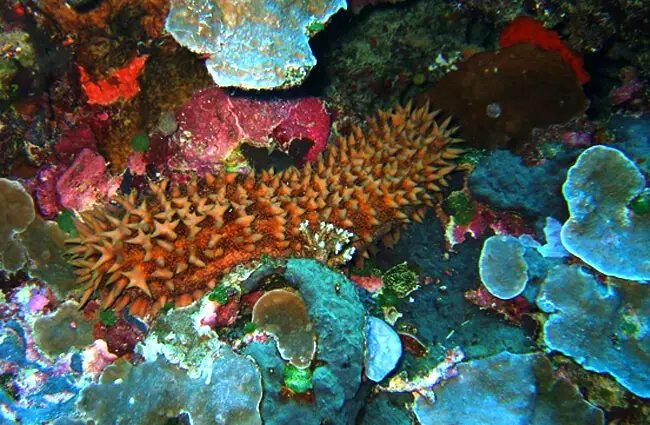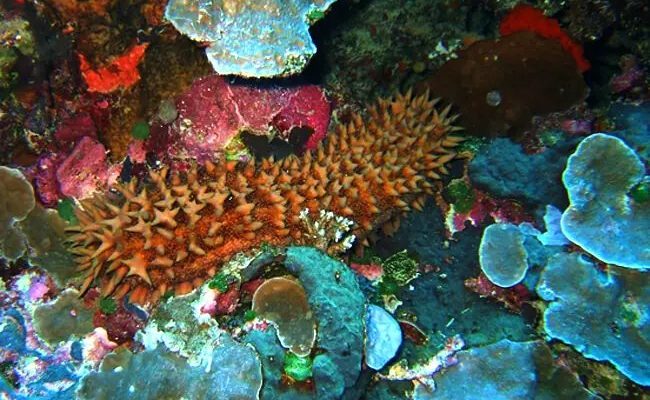
So, where exactly do sea cucumbers call home? They can be found all over the globe, from the deepest oceans to shallow coastal areas. It’s interesting to think of these critters thriving in such diverse locations, almost like a hidden treasure waiting to be discovered. In this article, we’ll dive deep into the various habitats where sea cucumbers are found, explore how they adapt to their environments, and provide a clearer picture of where these unique creatures fit into the vast marine landscape. Let’s get started!
Understanding Sea Cucumber Habitats
Sea cucumbers are not picky eaters, and the same goes for their homes. These creatures make their habitats in a range of environments, each offering different resources and conditions. In general, you’ll find sea cucumbers in:
- Deep ocean floors
- Shallow coastal waters
- Coral reefs
- Estuaries
What’s remarkable is how these creatures adapt to their surroundings. In the deep sea, where sunlight doesn’t reach, sea cucumbers thrive in complete darkness. They’ve evolved to consume organic matter that settles at the ocean bottom, breaking it down into nutrients. This recycling process has a big impact on the health of the ocean floor. So, whether they’re nestled into a sandy bed or crawling over rocky surfaces, sea cucumbers have found their niche.
Deep Ocean Floors: The Hidden Realms
In the deep ocean, sea cucumbers can be found at depths of over 6,000 meters (about 19,685 feet). Here, they contribute to an almost alien world. You might be wondering how they find enough food in such a dark place. Well, these cucumbers feed on *marine snow*, a term that describes tiny particles of organic matter that float down from higher depths.
Imagine a pristine blanket of snow, but instead of flakes, it’s a slow drift of nutrients. Sea cucumbers graze on this delicious banquet, playing an essential role in transferring that organic material into the ecosystem. Their movements help aerate the seabed, allowing for a healthy environment for other organisms, like bacteria and microorganisms, to thrive.
Shallow Coastal Waters: A Diverse Ecosystem
Moving closer to shore, you’ll find sea cucumbers in shallow waters, often in sandy or muddy substrates. This habitat is bustling with life, making it an excellent spot for these creatures. You can picture them burrowing into the sand, only to pop out when they sense food nearby. They often coexist with other marine life, like crabs and fish.
In these shallower regions, the waters allow for more sunlight, which supports the growth of algae. Sea cucumbers, in turn, help keep this environment healthy by feeding on organic debris. This relationship is a perfect example of how marine ecosystems depend on the balance of different species. By munching on leftovers, sea cucumbers help prevent the buildup of waste and promote a cleaner habitat for everyone.
Coral Reefs: The Colorful Neighborhood
Now, let’s take a dive into coral reefs, often referred to as the “rainforests of the sea.” Sea cucumbers are often found here, nestled among the colorful corals and vibrant fish. These reefs provide rich feeding grounds for them, full of nutrients and organic particles.
Coral reefs are delicate ecosystems, and sea cucumbers contribute to their health. They help break down and recycle organic matter in these environments as well. By doing this, they support the growth of corals, which in turn benefits countless marine species. It’s like a beautiful cycle of life, where everything is interconnected.
Estuaries: Where Freshwater Meets the Sea
Estuaries are unique havens where fresh and saltwater mix, creating a dynamic and nutrient-rich environment. Here, sea cucumbers can be found feasting on detritus—decaying plant and animal matter that collects at the bottom. This region often serves as a nursery for various marine species, and sea cucumbers help maintain balance in these thriving ecosystems.
You might imagine an estuary as a buffet of sorts. As matter flows into the estuary from rivers, sea cucumbers are ready to take advantage of this food source. They ensure that nutrients stay in circulation, feeding not only themselves but also supporting the whole ecosystem.
Adaptations for Different Environments
Sea cucumbers are truly fascinating when it comes to their adaptations. These creatures have evolved various traits that allow them to thrive in different environments, constantly adjusting to their surroundings. For example:
- Skin Texture: Some sea cucumbers have rough skin to protect themselves from predators, while others are soft and squishy to blend into their surroundings.
- Feeding Mechanisms: They use different methods to gather food, such as extending tentacles to capture particles or burying themselves to obtain nutrients from sediment.
- Respiration: Sea cucumbers can breathe through their skin or specialized structures called respiratory trees, allowing them to adapt to varying oxygen levels.
These adaptations are a testament to nature’s ingenuity, showcasing how life can persist and flourish in diverse habitats.
The Importance of Sea Cucumbers in Marine Ecosystems
In the grand scheme of things, sea cucumbers might not be the flashiest sea creatures, but their role is vital. By recycling organic material, they help sustain the marine environment. They also support the food chain, serving as a food source for larger animals, like fish and sea turtles. Without them, ecosystems could become unbalanced, affecting countless species.
Additionally, sea cucumbers have been used in traditional medicine and are harvested for culinary purposes in various cultures. This aspect highlights their significance beyond just being a part of the ocean floor. As we continue to explore our oceans, understanding the role of sea cucumbers helps us appreciate the intricate web of life beneath the waves.
As we conclude our exploration of where sea cucumbers are found, it’s clear these creatures are more than meets the eye. From their homes in deep ocean floors to the bustling life of coral reefs, they play a crucial role in maintaining the health of marine ecosystems. So next time you think about the ocean, remember the humble sea cucumber and the important work they do!

